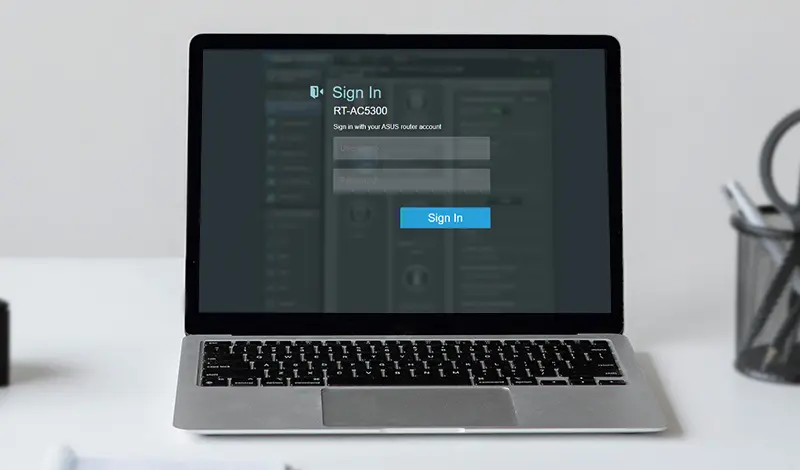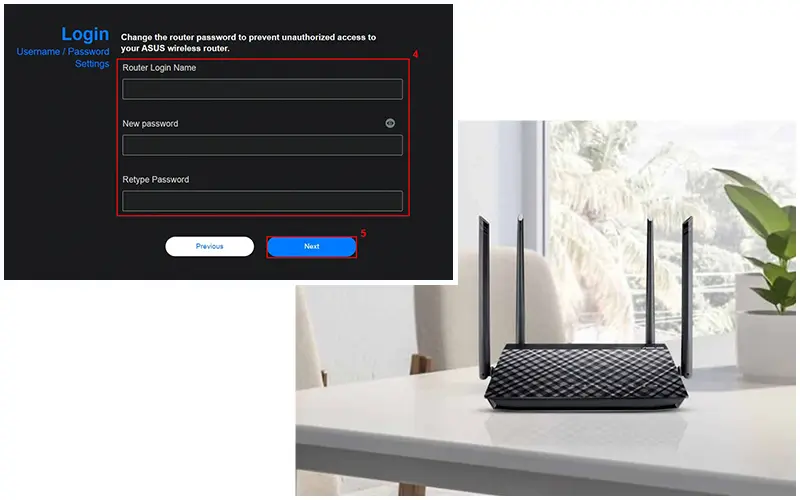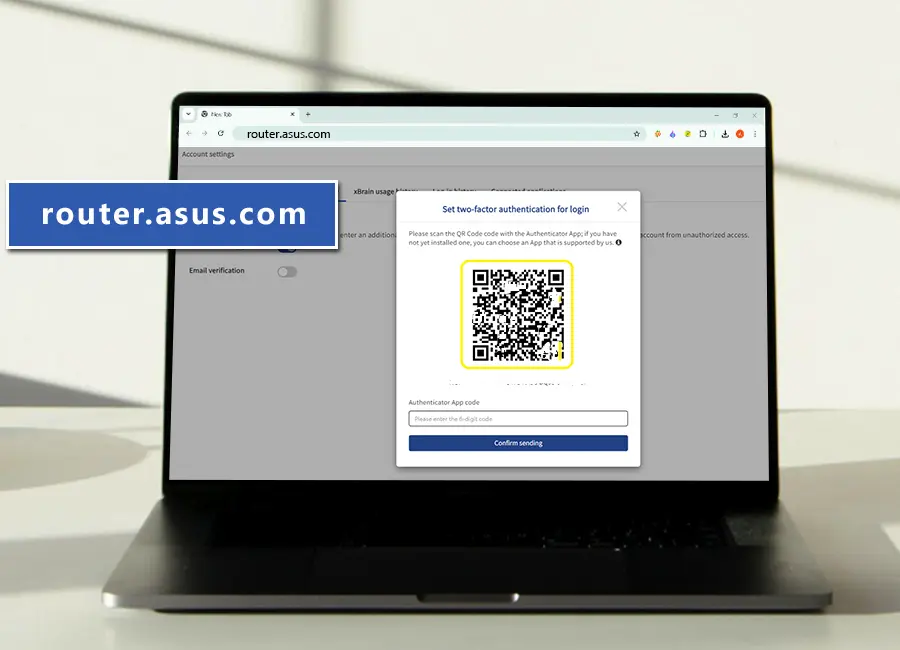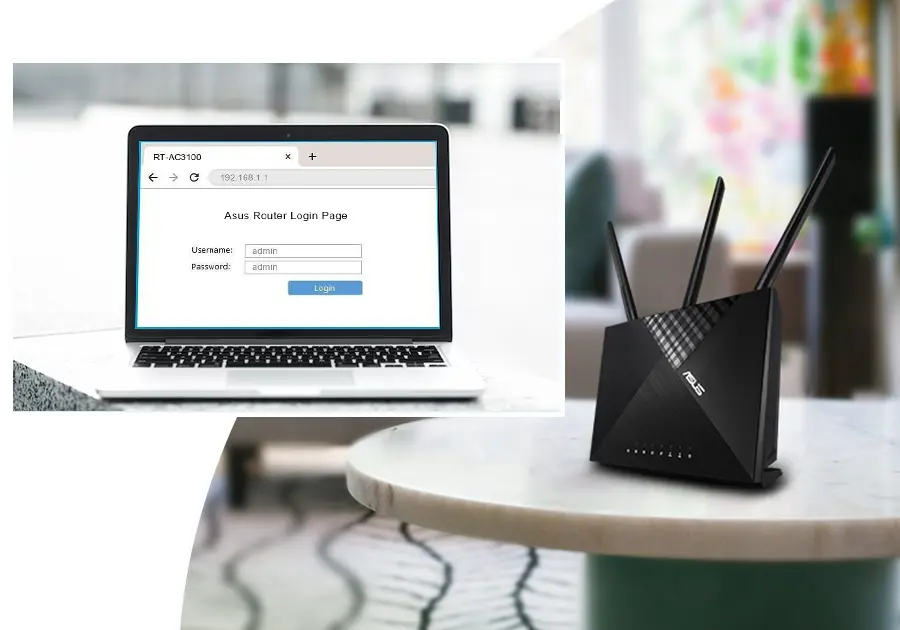Asus Router Login | Router.asus.com
Users can adjust network settings, improve speed, and control security features by logging in to the ASUS router’s web interface. Users need to provide the administrator username and password in a web browser along with the router’s default IP address, which is typically 192.168.1.1 or router.asus.com, in order to log in. The asus router login process provides access to a wide range of features, such as firmware updates, parental controls, Wi-Fi settings, and sophisticated networking options. ASUS routers ensure continuous connectivity with their robust security features and user-friendly interface. If login issues arise, resetting the router or verifying login credentials may help restore access to the management panel.
How to Access the Asus Router Login Page
If you need to know how to login to asus router then trail these points;
- Make sure your device is using Wi-Fi or an Ethernet connection to connect to the Asus router network.
- Then, unveil the browser.
- For Asus routers, enter the IP address (often “192.168.1.1” or “192.168.0.1”) and hit Enter.
- The login authorizations for the router will need to be entered.
- Usually, “admin” is the default password and username, but for further information, see the literature or handbook that came with your router.
- You may modify settings, update firmware, and administer your network using the router’s management interface after logging in.
- Change the default login information for security, and think about turning on extra security features like firewall settings and WPA2 encryption.

Using router.asus.com to Access the asus router Login Page
By going to router.asus.com, you may access your ASUS router’s login page and control firmware upgrades, security, and network settings. Just open a web browser, input the URL, and join the router’s network. To set up Wi-Fi, parental controls, and other advanced features for optimum performance and security, log in using your admin credentials. To ensure effective access, make sure your device is connected.
- First of all, link the device and router.
- Now launch a web browser
- Type ” asus login router” into the bar and hit Enter.
- The router’s login page can be easily accessed by using this URL.
- Hereafter pass in the login details.
- Use the typical login authorizations
- After logging in successfully, you’ll be able to access the administration interface of the router, where you may adjust different settings, update firmware, and effectively manage your network.
- Don’t forget to modify the default login information for increased security.
What are Default Credentials to Access Asus Router Login
The ID and keyword are frequently set to “admin” by default when logging into an Asus router. The administration interface of the router can be accessed with these credentials in order to manage the network and configure settings. To guarantee the security of your network and linked devices, you must, however, modify these default credentials during the router’s initial configuration in order to stop unwanted access.
Ways to Change Default Login Authorizations

- Using a web browser, log in to the management interface of your Asus router with the default credentials.
- Then, Look in the router settings for the “Administration” or “Management” area.
- Now, seek for options to modify the login information. Choose a different username and password to use.
- Hereafter, Save the modifications from within the router’s interface after inputting the new login credentials.
- Now to make sure that the new credentials are functioning properly, log out of the router interface and log back in.
- Lastly, to prevent forgetting the new login credentials, store them safely.
Methods to Login to Asus Router
Web Browser Access:
- This is the most used approach.
- You connect your computer or device to the ASUS router’s network via Wi-Fi or an Ethernet connection.
- Then, open a web browser such as Google Chrome, Firefox, or Microsoft Edge and type the router IP address into the box.
- 192.168.1.1 or 192.168.0.1 are common defaults.
- Press Enter to bring up the router’s login page, where you may enter your username and keyword.
Asus login router using My Asus Login Portal:
- To log in to your Asus router using the My Asus Login Portal, connect your device to the router’s network.
- unveil browser and pass in ” router asus login” in the bar.
- You will be steered to the My Asus Login Portal.
- Pass in the user ID and keyword, for log in.
- After login, you can accomplish and construct router settings as needed.
SSH/Telnet Access:
- For sophisticated users, ASUS routers may provide SSH (Secure Shell) or Telnet access.
- To access the router’s command-line interface, use a terminal or command prompt software.
- However, accessing the router using SSH or Telnet necessitates understanding of networking and command-line interfaces, and it is generally not recommended for regular users due to the possibility of configuration problems.
ASUS Router App:
- ASUS offers an app for working with their routers.
- You can get this app from your device’s app store.
- Once installed, open the app and follow the prompts to log in to your router.
- This strategy is very useful for people who like to manage their network settings via their smartphones or tablets.
AiCloud Service:
- If your ASUS router supports AiCloud, you may be able to access router settings remotely via the AiCloud website or mobile app.
- This method allows you to manage your router while you are not at home.
- To use this function, you must first establish an ASUS account and associate it with your router.
Reset Button:
- If you’ve forgotten your router’s login information or are having difficulties accessing it through other means, you can use the reset button to reset it to its factory default settings.
- Keep in mind that this may remove any custom settings you’ve made, so only use it as a last option.
- At that time, you can customize the default way of login.
Control Panel for Asus Routers:
- For more sophisticated asus router setup choices, certain Asus’s routers also come with a control panel that can be accessed through a desktop program.
- Continuously modify the default user ID and keyword for your router login to something more secure to avoid illegal network admittance.
Improving Security After Asus Router Login
After logging into your Asus router, you must enhance security to protect your network from online threats. Deactivating remote management, turning on WPA3 encryption, updating firmware frequently, and changing the default login credentials are all crucial steps. Security is further enhanced by using a strong password and turning on the firewall. You may safeguard your data and ensure a secure and reliable internet connection for all connected devices by implementing these safeguards.
- Change the username and password right away to something unique and secure to prevent unwanted access.
- To stop unwanted access, make sure your Wi-Fi has the most recent version of WPA3 encryption installed.
- Now, to address vulnerabilities and improve router functionality, regularly check and patch firmware updates.
- After that, disable Wi-Fi Protected Setup (WPS) as there can be a security risk.
- Make a backup guest network for visitors in order to safeguard your main network.
- Then, to increase security even further, activate the router’s built-in firewall.
- After then, regularly review the list of connected devices to identify and remove any unauthorized access.
- Finally, install a VPN on your network to increase privacy and encrypt all internet traffic.
How to Access and Enable Two-Factor Authentication
You may increase security by enabling Two-Factor Authentication (2FA) while logging into your Asus router. This is how you do it:
- Enter ” router asus login” in your web browser to access the web interface of your Asus router.
- After this pass in the login details.
- Afterwards, navigate to the “Administration” section of the router’s settings menu.
- Within the administrative panel, look for login management or security options.
- Now to activate two-factor authentication, select this option. It might be compulsory to configure a substantiation app on your mobile device.
- After this scan the QR code that the router interface provides using the authentication app.
- To confirm, input the code produced by the authentication application into the router’s interface. Save the modifications.
- Now to make sure 2FA is working properly, log out and try to log back in.
- At last, 2FA requires both your password and the authentication code.

How to Fix router.asus.com/asusrouter.com Not Working?

- Firstly, connect the router and device.
- Use the IP address (such as “192.168.1.1” or “192.168.0.1”) in the bar of your browser instead of the URL.
- After clearing the caches try login again.
- Hereafter, check whether the problem still exists by using a diverse browser.
- Restart the router.
- Check if there is any hindrance because of VPN or proxy service.
- At last, also check if any other device is creating hindrance.
Why is http //router.asus.com / asusrouter.com Not Responding?
The following factors may be at play if http:// asus.router.login or http://asusrouter.com is not responding:
- At first try to link the devices properly.
- Then, Pass in the correct URL.
- The IP address may have transformed. Make use of the IP by default, such as “192.168.1.1” or “192.168.0.1”.
- Again, see if there is a firmware upgrade required for the router.
- Turn off any security programs or firewalls that might be preventing access.
- If required, restart the router or carry out a factory reset.
Troubleshooting Router.asus.com / asusrouter.com Not Working
Try these troubleshooting procedures if either asusrouter.com or router.asus.com not working:
- Network Connection: Verify that your gadget is either Wi-Fi or Ethernet connected to the Asus router.
- Employ IP Address: pass in “192.168.1.1” or “192.168.0.1” into your browser.
- Empty Cache: Again, try after reimbursement the cookies and cache in your browser.
- Use a Different Browser: Change to an alternative web browser.
- Start again the router: try staring the router again
- Turn off VPN/Proxy: Verify that neither one is causing any issues.
- Firmware update: Determine whether there is asus router firmware update
- Factory Reset: Use the guidebook to do a factory reset as a last recourse
Troubleshooting Asus Router Login Issues
Common Asus Login Issues
- Incorrect Username or Password
- IP Address Conflict
- Network Connection Issues
- Browser Compatibility
- Router Firmware Issues
- Firewall or Antivirus Interference
- Cache and Cookies
- Router Hardware Issues
Solutions
If you’re experiencing the aforementioned issues login into your Asus router, you should follow these troubleshooting steps:
- Fix the connection between the router and the device first.
- Try using the router’s IP address instead of the default URL (asus.router.login), which is usually “192.168.1.1” or “192.168.0.1.”
- After the browser’s cache and cookies have been restored, try logging in once more.
- Use a different browser to rule out issues with a particular one.
- After that restart the router.
- Verify that a VPN or proxy service isn’t interfering with the connection if the Asus router continues losing its internet connection.
- Check to see if a firmware upgrade is required, and if so, apply it.
- Do a factory reset by following the directions in the router’s manual.
Advanced Configuration and Settings Post Login
- First, Update your network settings.
- Then, create a strong, one-of-a-kind password and personalize your network name (SSID).
- Now to keep your primary network safe, set up a second guest network.
- Subsequently to boost connectivity and lessen interference, switch wireless channels.
- Hereafter, turn on Quality of Service (QoS) to give important apps priority when it comes to bandwidth.
- Then to limit access to unsuitable content and govern device usage, set up parental controls.
- After this, turn on the router’s firewall to give even more protection.
- To improve privacy, set up a VPN on the router to encrypt all internet traffic.
- To guarantee the router runs effectively and securely, routinely check for and apply firmware updates.
- At last, Make all the amendments for security settings.

FAQs
Check the router’s manual or the sticker on the device for the default login details before attempting to access your ASUS router login credentials. Try returning the router to its original factory settings if you’ve already altered the login information and have the asus router forgot the login password. Usually, this entails holding down the reset asus router button for ten seconds or so. After that, you can enter the router settings by using the default credentials.
If you can’t login to the asus router then reset is the only option. Find your router’s reset button, which is often located on the back. To force the router to restart, press and hold the button for roughly ten seconds. After that, you can use the standard username and password—”admin” for both—to log in before changing it to something you’ll really remember.
An ASUS router’s login URL cannot be altered. Typically, the IP address of the router—such as “192.168.1.1”—is the default URL for visiting the login page. The software of the router determines this URL, and it cannot be changed. Nevertheless, after logging in to this URL, you can alter the router’s security settings.
Take these actions to safeguard your ASUS router login:
- Replace the default username and password with robust, one-of-a-kind choices.
- Turn on HTTPS access to encrypt your login information.
- Turn off remote administration to stop unwanted access.
- Routinely update router firmware to address security flaws.
- Turn on intrusion detection and firewall functions.
- Make use of a distinct network SSID and passphrase, together with robust Wi-Fi encryption (WPA2/WPA3).
- If supported, think about turning on two-factor authentication.
Try navigating to the ASUS router login page directly using the router’s IP address (e.g., “192.168.1.1”) in your web browser’s address bar if ” asus login router com” is unable to do so. Verify that the network connected to the router is yours. Verify the settings on your router and network linking if the issue lingers.
There may be a number of reasons why you can’t access the ASUS router through ” asus.router.login,” including network problems, DNS resolution issues, or broken router settings. Attempt to reach the IP address directly by typing “192.168.1.1” in the browser. If problems continue, check the router’s configuration for any blocking or redirection settings or contact ASUS support.